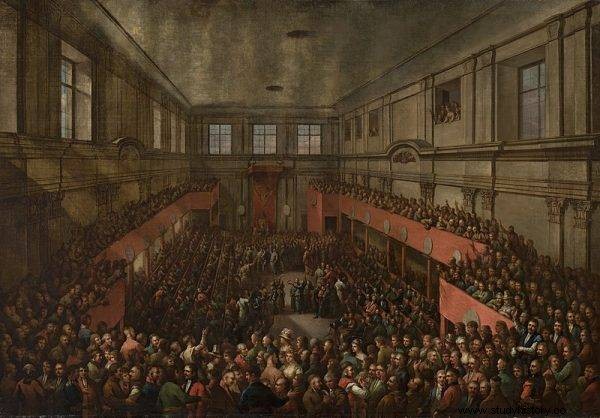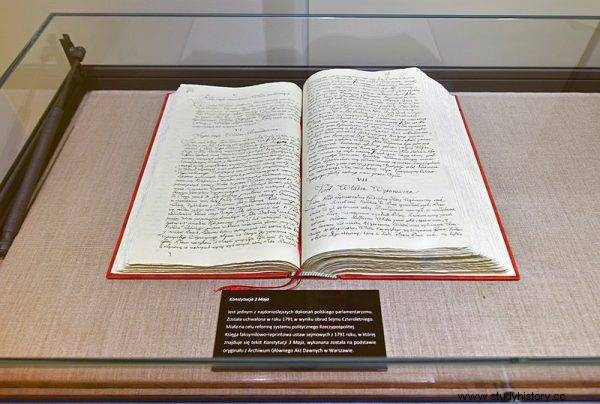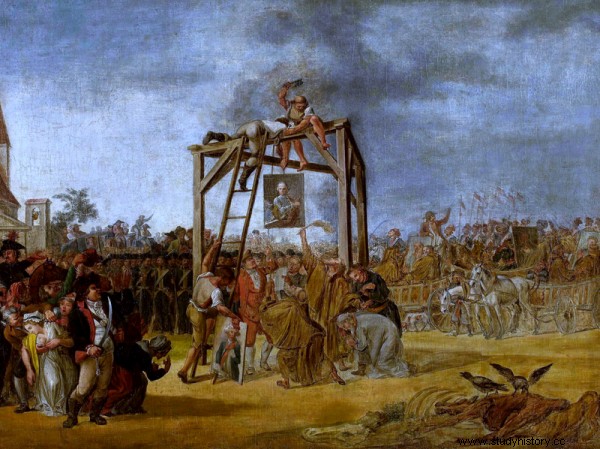The May 3rd Constitution was born in an atmosphere of political disputes, and its adoption turned out to be a difficult nut to crack. How did the first constitution in Europe come about, and why are its opponents today a symbol of national treason?
"Hello, May dawn, shine our Polish land, we will celebrate you with a song that is famous all over Poland" . These words of the mazurka of May 3 are known to most compatriots. And although the text itself was written during the November Uprising, it was supposed to recall the event of the adoption of the May 3rd Constitution in 1791.
This act was supposed to bring about changes, reforms, which in fact began much faster, but it is the constitution that is a symbol of those times - and saving the homeland. After the second partition of Poland, however, it became just an unfulfilled dream an independent and modern state that was desired by generations of enslaved Poles.
A time of change
After the first partition of Poland, the number of supporters of reforms grew in the country. The need for changes was signaled earlier, for example by the writers of the Polish Enlightenment, Hugo Kołłątaj, Stanisław Staszic or Julian Ursyn Niemcewicz, an outstanding playwright. They criticized the drunkenness, laziness and extravagance of the nobility, and also called for the abolition of free elections and liberum veto .
Students of the Knight's School and young people involved in political activities also joined the group of people striving for reforms. The most important goal was independence from Russia, headed by Tsarina Catherine II.

This act was supposed to bring about changes, reforms, which in fact began much faster, but it is the constitution that is a symbol of those times - and saving the homeland.
Such a situation arose after the outbreak of the Russo-Turkish war in 1787. The Tsarina of Russia tried to gain the support of the Republic of Poland. For this purpose, a parliament was convened to approve the Polish-Russian alliance. This Seym began to deliberate in 1788 and went down in history as the "Great" or "Four-Year" Sejm, as the sessions lasted until 1792.
Stanisław Małachowski became the marshal. One of the first resolutions of the Seym was the liquidation of the Perpetual Council, which was mockingly called "The Perpetual Betrayal" . It was the most important administrative body responsible for the economic development of the country, but in fact limited, inter alia, the power of the king and was hated by the Poles. Perhaps because the head of the Council was Otton Magnus von Stackelberg, the Russian ambassador.
In addition, it was approved to increase the army from 24,000 to 100,000 soldiers. In order to obtain funds for the expansion of troops, taxes were levied on the nobility and clergy for the first time in the history of the Polish-Lithuanian Commonwealth . An army of 65,000 was built with the funds obtained. A law was also established that allowed townspeople from cities that were owned by the king to receive noble titles, clerical dignities or an officer's career.
National consent
The supporters of reforms, who focused on Marshal Stanisław Małachowski, Hugo Kołłątaj and Ignacy Potocki, sought an agreement with King Stanisław August Poniatowski.
Ignacy Potocki was entrusted with laying the foundations for the new state system. He was a staunch opponent of the king . However, despite the lack of sympathy and dissenting views, he asked Stanisław August for help in creating a new constitution. This consent led to the development of a draft constitution that radically changed the political system of the Republic of Poland.
At the session of the Seym on May 3, 1791, the joint position of the king and the rest of the supporters of reform was presented. An important point that determined the passing of the law was the presentation of the situation in which Poland found itself - and the specter of another danger posed by the partitioning powers. Ultimately, after the stormy deliberations, the deputies reached an agreement. The Government Act became a fact and was the first constitution in Europe and the second in the world . The crowd gathered in front of the Royal Castle was enthusiastic about the adoption of the constitution.

Facsimile-reprint book of parliamentary acts of 1791, open to one of the pages of the Constitution of May 3
The Government Act abolished the division into Poland and Lithuania, establishing one state, i.e. the Republic of Poland. In addition, a tripartite division of power was introduced, the rights of the townspeople and care for peasants were increased, which could improve their fate in the future. The liberum veto and free election were also abolished, which meant that henceforth the throne was to be inherited.
Betrayal symbol
Opponents of such radical changes, led by Stanisław Szczęsny Potocki, Seweryn Rzewuski and Franciszek Ksawery Branicki, made an alliance with Tsarina Catherine II. In 1792, they established a confederation in the town of Targowica. They summoned the 100,000-strong Russian army that attacked the Polish-Lithuanian Commonwealth.
Polish troops under the command of Józef Poniatowski (apart from the victory in the Battle of Zieleniec) were not able to stop the larger enemy army and were forced to surrender. The residents of Targowicz, who are considered a symbol of national treason, took power and annulled the provisions of the May 3rd Constitution. Noble privileges, liberum veto and free elections were restored. In 1793, Russia and Prussia, despite the surrender of Polish troops, carried out the Second Partition of Poland.

Picture showing symbolic hanging of targowiczan in effigie
For generations of Poles, the May Constitution has become a symbol of pride, freedom and an opportunity to manifest one's patriotism. During the partitions, it was forbidden to celebrate the anniversaries of the adoption of the Government Act under the threat of severe punishment. Only after regaining independence in 1918 did the Seym recognize the May 3rd Constitution as a national holiday. In the times of the Polish People's Republic, the communist government banned this holiday by forbidding public manifestos. Clashes with the militia took place very often these days. Public celebrations were only allowed again in 1981.
